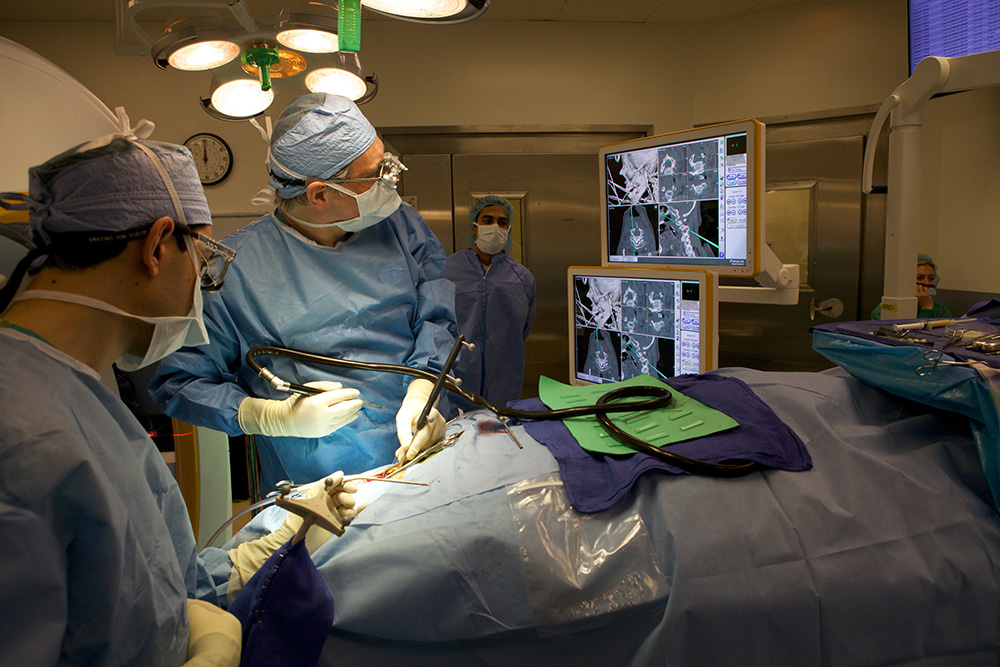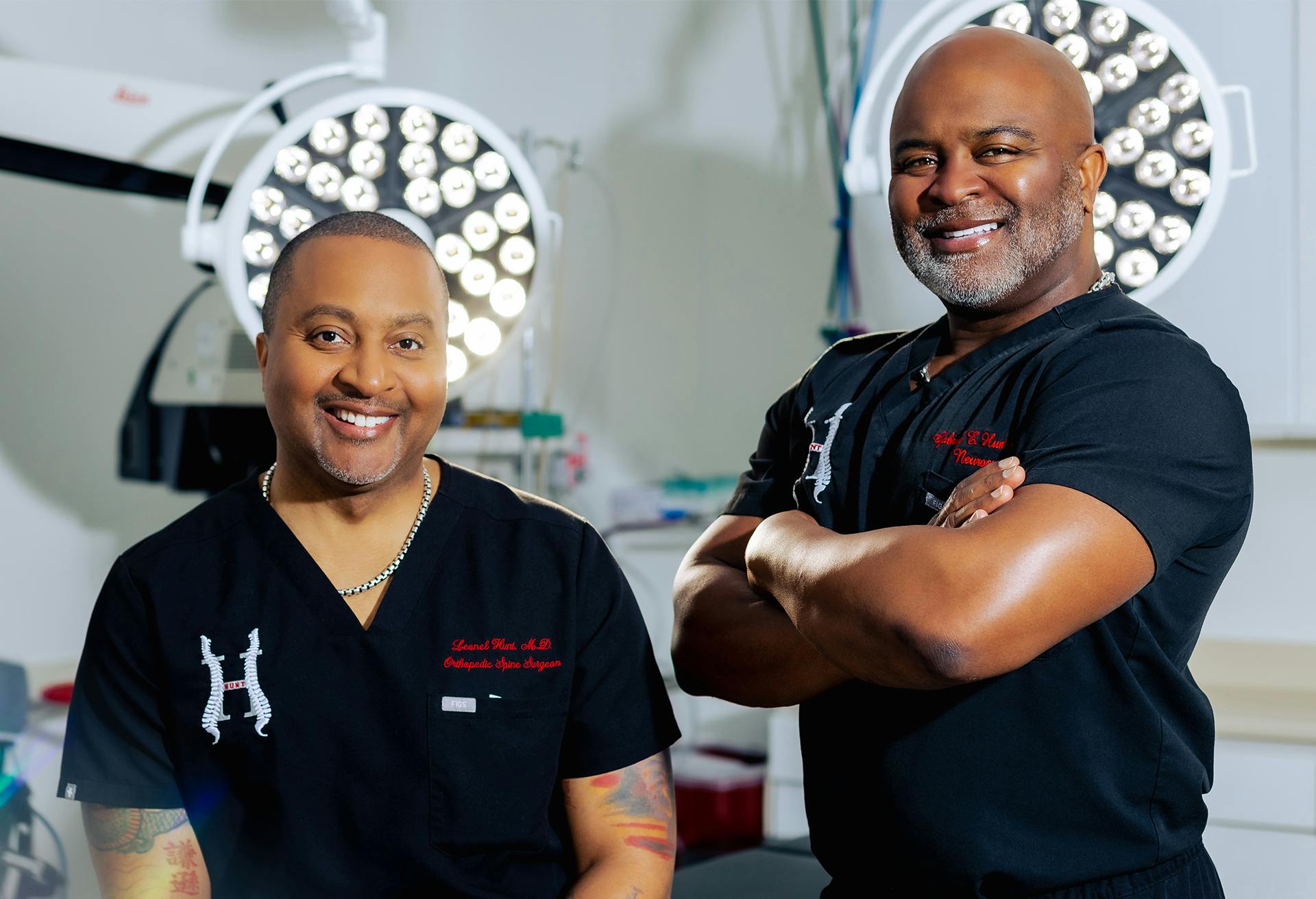Just how to Get ready for Visits to the Best Spine Surgeons in St Louis MO
Just how to Get ready for Visits to the Best Spine Surgeons in St Louis MO
Blog Article
What Back Issues Usually Lead to Surgery for Alleviation?
Back concerns that require surgical intervention frequently occur when conservative treatment alternatives stop working to offer sufficient alleviation from consistent pain and practical disability. Conditions such as herniated discs, spinal stenosis, and degenerative disc condition regularly lead to medical procedures aimed at relieving signs and bring back mobility.

Herniated Discs
Herniated discs are an usual spinal condition that often results in surgical treatment when traditional therapies stop working. This condition occurs when the soft inner gel of a spine disc extends via a tear in the harder external layer, potentially pressing close-by nerves. Signs and symptoms frequently consist of localized pain, emitting pain in the limbs, and neurological deficits such as tingling or weak point.

Surgical procedure intends to relieve discomfort and bring back feature by removing the herniated section of the disc or maintaining the influenced spine segment. While several people experience significant renovation adhering to surgery, it is essential to evaluate the benefits and threats in assessment with a certified back expert. Ultimately, prompt treatment is vital to improve and stop additional problems lifestyle for people experiencing this debilitating problem.
Back Stenosis
Experiencing spinal stenosis can dramatically influence a person's flexibility and quality of life. This problem occurs when the back canal narrows, positioning stress on the spine and nerves. Commonly seen in the lumbar (reduced back) and cervical (neck) regions, back stenosis commonly arises from degenerative adjustments related to aging, such as joint inflammation, disc herniation, or enlarging of ligaments.
Signs of spine stenosis can vary, but they normally consist of discomfort, tingling, prickling, and weakness in the extremities. These symptoms might aggravate with activity or prolonged standing and typically boost with rest. In severe cases, individuals may experience difficulties with equilibrium and control, causing an increased threat of falls.
When traditional therapies, such as physical treatment, drugs, and way of life adjustments, fail to minimize signs and symptoms, medical intervention may be taken into consideration. Treatments like laminectomy or spinal combination goal to unwind the afflicted nerves and support the back. Early diagnosis and treatment are important in taking care of back stenosis effectively and protecting wheelchair, ultimately enhancing the client's general top quality of life.
Spondylolisthesis
Spondylolisthesis takes place when one vertebra slips ahead over the one below it, possibly causing spine instability and nerve compression. This problem can emerge from numerous aspects, consisting of hereditary problems, degenerative modifications, trauma, or recurring anxiety injuries. Signs often include lower back pain, rigidity, and radiating discomfort in the legs, which can substantially affect everyday activities and total lifestyle.
Diagnosis normally includes a comprehensive scientific examination, imaging research studies such as X-rays or MRI, and evaluation of neurological function. The level of slippage is categorized into qualities, with higher grades indicating more severe variation and a greater chance of surgical intervention.

Very early diagnosis and appropriate administration are critical in improving and protecting against additional difficulties individual outcomes. As spondylolisthesis can result in chronic discomfort and special needs, prompt treatment is crucial for bring back spine health and wellness.
Degenerative Disc Condition
Degenerative Disc Illness (DDD) is a problem identified by the steady damage of the intervertebral discs, which function as essential shock absorbers between the vertebrae of the spine. As these discs lose hydration and elasticity gradually, they become less efficient at supporting the vertebrae, resulting in raised friction and stress on the spine frameworks.
Individuals with DDD frequently experience signs and symptoms such as persistent pain in the back, rigidity, and reduced movement (best spine surgeons in st louis mo). The problem can additionally lead to nerve compression if the degenerated discs bulge or herniate, resulting in radicular pain, weakness, or feeling numb in the arm or legs
Treatment choices array from conventional steps, including physical treatment and discomfort management, to even more intrusive treatments when conventional measures fall short. Surgical interventions, such as spine fusion or man-made disc substitute, might be shown for patients with significant discomfort and functional impairment.
Back Tumors
Spinal tumors, which can be malignant or benign, stand for one more significant source of spine conditions that may require medical treatment (best spine surgeons in st louis mo). These growths can stem within the back (main tumors) or spread from other components of the body (secondary tumors) Their existence can bring about various signs, including local discomfort, neurological deficiencies, and modifications in wheelchair
Surgical therapy for spinal growths frequently aims to reduce signs by getting rid of the tumor, supporting the spinal column, and dealing with any kind of compressive impacts on the spine or nerves. Indications for surgical procedure generally consist of considerable pain not receptive to traditional therapies, or neurological impairment arising from the growth's growth.

It is essential for patients providing with symptoms symptomatic of back lumps to undertake detailed diagnostic evaluations, consisting of imaging research studies and biopsies, to determine the suitable strategy (best spine surgeons in st louis mo). Early detection and intervention can significantly enhance individual outcomes and high quality of life
Final Thought
In recap, different back problems, consisting of herniated discs, spine constriction, spondylolisthesis, degenerative disc illness, and spine growths, typically necessitate surgical treatment when conventional treatments fail to offer relief. These conditions result in substantial discomfort and useful impairment, motivating the consideration of procedures such as discectomy, back fusion, and laminectomy. Eventually, medical options aim to relieve discomfort, enhance flexibility, and bring back lifestyle for people impacted by these incapacitating back conditions.
Conditions such as herniated discs, spine stenosis, and degenerative disc illness regularly lead to medical procedures aimed at restoring and easing symptoms flexibility.Herniated discs are a common back condition that regularly leads to medical treatment when conventional therapies stop working. Surgical treatments, hop over to here such as back combination or man-made disc substitute, may be shown for patients with significant discomfort and useful disability.Spine growths, which can be malignant or benign, represent another substantial reason of spinal conditions that might necessitate surgical intervention.In summary, various spinal column issues, including herniated discs, back constriction, spondylolisthesis, degenerative disc disease, and spine lumps, commonly necessitate medical intervention when conventional treatments fall short to offer alleviation.
Report this page